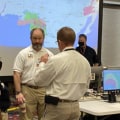When a disaster is declared, the federal government, led by the Federal Emergency Management Agency (FEMA), responds at the request and in support of states, tribes, island territories and areas and local jurisdictions affected by a disaster. Emergencies that reach the CSC level are generally expected to be multi-jurisdictional, state, or even multi-state incidents involving various local, regional, state and federal functions and authorities. Therefore, significant coordination at the state level with intra- and interstate partners, as well as with federal ones, is essential. In other words, while this chapter focuses on the state as the one that is best placed to lead the planning and implementation activities of the CSC, since it can serve as a link to link local, regional, state, federal and private components, the response to this level of crisis requires a comprehensive systemic approach.
In this system, all levels of government (from local to federal) and all components of emergency response and health care are mobilized as a coordinated, interdependent and interactive response network. In accordance with Presidential Policy Directive 8, the federal government published the National Response Framework and the National Disaster Recovery Framework, guidelines on national response to all types of disasters and emergencies and effective support for the recovery of areas affected by the disaster. The Recovery Framework states that “care must be taken to ensure that actions, both intentional and unintentional, do not exclude groups of people on the basis of race, color, national origin (including limited English proficiency), religion, sex or disability. Both frameworks highlight the importance of meeting the non-discrimination requirements of civil rights laws, addressing the needs of the entire community, and ensuring equal opportunities to access recovery initiatives.
State legal advisors should also be carefully consulted on a number of legal issues, such as the use of response authorities, the various response actions, existing or necessary liability protections, and regulatory requirements (or exemptions from them). Public Safety Canada works in collaboration with other federal departments and provincial and territorial governments to strengthen national emergency preparedness by planning, supporting training, exercising and testing emergency management arrangements and plans, and sharing lessons learned from events and exercises. The state health department and the state emergency management agency (EMA) can receive and manage emergency alerts that may activate the state CSC plan from stakeholders, including local public health, health care and emergency management partners. Depending on the specific nature of the incident, several state agencies, as well as private health system entities, should be involved in the planning and implementation activities of the CSC since no single health or emergency response agency or entity can be expected to deal with the challenges posed by a CSC incident. For example, certain critical response tools such as state emergency declarations or exemptions from state law needed to facilitate the response fall to the state level and can only be activated by state leaders. Public Safety Canada has developed an Action Plan for Emergency Management in Canada which will promote outcomes defined within Canada's Emergency Management Strategy.
This plan will demonstrate concrete measures that federal, provincial and territorial governments intend to take to increase resilience to disasters. Through each of these functions relationships and authorities mentioned above in public health medical care and emergency management systems; the state health department is often in the best position to ensure that state regional and local CSC planning and implementation initiatives are being carried out in a systematic manner. Ideally a general emergency response system is needed that incorporates public health planning health care public safety emergency management partners and groups. In order to meet this need government response partners can identify strategies for their appropriate replacement conservation adaptation reuse or reassignment; they can also use resource tracking methods to monitor availability of applicable resources during CSC response. In case of emergency care situations government response partners must understand how to implement intrastate or interstate response plans or mutual aid agreements to replace retain or adapt personnel transportation patient classification or destinations. The Emergency Management Act recognizes roles that all stakeholders must play in Canada's emergency management system.
Depending on state structure public health system; state health department generally has variety of responsibilities in terms of public health health care emergency response system such as. Ultimately participation of all government actors with their inherent roles responsibilities will be necessary to ensure adequate response to an emergency magnitude that implementation of CSC would require.






